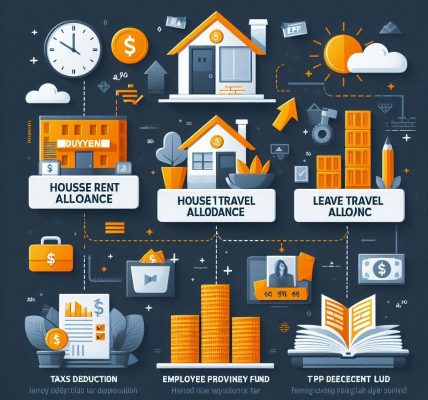Introduction
For high-income earners, tax planning is an essential part of financial management. With evolving tax laws and rising income brackets, smart tax strategies can help reduce liabilities while ensuring compliance with legal regulations. This DIY guide will walk you through effective, legal, and practical tax-saving strategies for 2025 to help you retain more of your hard-earned money.
Understanding Tax Brackets for High-Income Earners
Before implementing tax-saving strategies, it’s crucial to understand the tax brackets applicable to high-income earners. The U.S. tax system is progressive, meaning higher earnings are subject to higher tax rates. The top federal income tax rate for 2025 remains at 37% for individuals earning above a specified threshold, along with additional state and local taxes where applicable.
Key Taxes High-Income Earners Should Consider:
- Federal Income Tax – Progressive tax rates up to 37%.
- State Income Tax – Varies by state; some states have no income tax.
- Capital Gains Tax – Up to 20% on long-term investments.
- Net Investment Income Tax (NIIT) – An additional 3.8% tax for individuals earning over $200,000 ($250,000 for married couples filing jointly).
- Alternative Minimum Tax (AMT) – A parallel tax system that limits deductions for high-income taxpayers.
- Self-Employment & Payroll Taxes – Additional Medicare tax of 0.9% for earnings above $200,000 ($250,000 for married couples).
Top Tax-Saving Strategies for 2025
1. Maximize Retirement Contributions
Contributing to tax-advantaged retirement accounts is one of the most effective ways to reduce taxable income.
- 401(k) & 403(b) Plans: Contribute the maximum allowable limit ($23,000 for 2025; $30,500 for those 50 and older with catch-up contributions).
- Traditional IRA: Contributions may be tax-deductible, depending on income levels.
- Backdoor Roth IRA: A strategy to bypass income limits by converting a non-deductible IRA into a Roth IRA for tax-free growth.
- SEP IRA or Solo 401(k) for Self-Employed: High earners with self-employment income can contribute up to $66,000 in 2025.
2. Use Tax-Advantaged Accounts
- Health Savings Account (HSA): Contribute up to $3,850 (individual) or $7,750 (family) tax-free, plus an additional $1,000 for those 55+.
- Flexible Spending Account (FSA): Reduce taxable income by contributing pre-tax dollars to cover medical and dependent care expenses.
- 529 College Savings Plan: State tax deductions and tax-free withdrawals for education expenses.
3. Optimize Investment Strategies
- Tax-Loss Harvesting: Offset capital gains by selling losing investments.
- Long-Term Capital Gains: Hold investments for over a year to qualify for lower tax rates (0%, 15%, or 20%).
- Municipal Bonds: Interest earned is exempt from federal taxes and, in some cases, state taxes.
- Qualified Opportunity Zones: Invest in designated areas for tax deferrals and potential elimination of capital gains tax.
4. Leverage Charitable Giving
- Donor-Advised Funds (DAFs): Contribute appreciated securities or cash for an immediate tax deduction while distributing funds over time.
- Qualified Charitable Distributions (QCDs): For those over 70½, donate up to $100,000 directly from an IRA to a charity without incurring taxable income.
- Bunching Charitable Donations: Combine multiple years of donations into a single year to exceed the standard deduction threshold.
5. Utilize Business & Self-Employment Tax Deductions
- Pass-Through Business Deduction (QBI): Eligible business owners can deduct up to 20% of qualified business income.
- S Corporation Election: Reduce self-employment taxes by structuring a business as an S Corp and taking a reasonable salary.
- Home Office Deduction: If applicable, claim a portion of home expenses for business use.
- Business Expense Deductions: Deduct necessary and ordinary business expenses, including travel, meals, and equipment.
6. Plan for Estate and Gift Taxes
- Annual Gift Tax Exclusion: Gift up to $17,000 per person in 2025 without triggering taxes.
- Lifetime Estate Tax Exemption: The exemption amount for 2025 is expected to be around $13 million per individual.
- Irrevocable Trusts: Consider setting up trusts to shield assets from estate taxes and provide tax benefits to beneficiaries.
7. Take Advantage of Tax Credits
- Energy-Efficient Home Improvement Credits: Tax credits for installing solar panels, energy-efficient windows, or electric vehicles.
- Child and Dependent Care Credit: For eligible childcare expenses.
- Education Credits: American Opportunity Tax Credit (AOTC) and Lifetime Learning Credit (LLC) for tuition expenses.
8. Defer Income Strategically
- Delay Bonuses or Income: If expecting a lower tax bracket next year, defer income to reduce current tax liability.
- Installment Sales: Spread capital gains tax liability over multiple years when selling assets.
- Stock Options & Equity Compensation: Exercise stock options strategically to minimize tax implications.
Avoiding Legal Pitfalls in Tax Planning
While tax-saving strategies are essential, it is equally important to ensure compliance with tax laws to avoid IRS scrutiny. Here’s how:
- Document Everything: Maintain receipts, financial statements, and tax records for at least 7 years.
- Avoid Aggressive Tax Shelters: Engage only in IRS-approved tax-saving strategies.
- Hire a Tax Professional: Work with a CPA or tax attorney to navigate complex tax laws.
- File On Time and Accurately: Missing deadlines or misreporting income can result in penalties.
Conclusion
High-income earners have multiple opportunities to reduce their tax burden legally and efficiently. By leveraging retirement contributions, investment strategies, business deductions, and charitable giving, you can maximize your tax savings in 2025. However, staying compliant with tax laws is crucial—always consult a tax professional to tailor strategies to your financial situation.
Implementing these smart tax strategies will not only enhance your savings but also ensure financial security for the future. Start planning today to make the most of your earnings in 2025




